Herbs with purple flowers are a beautiful addition to any garden. They add color and life to any space, and they also have many medicinal benefits. In this blog post, we will discuss 15 herbs that have purple flowers. We will talk about their benefits, how to use them, their ideal growing conditions, and where you can find them. We hope you enjoy it!
Table of Contents
1. Lavender
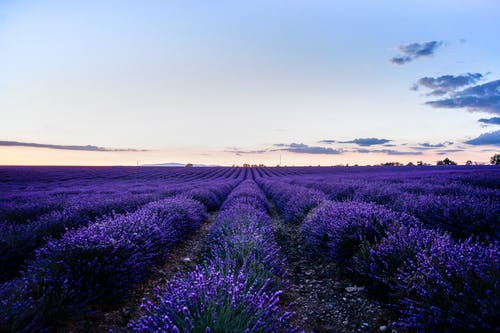
Lavender is a flowering plant that produces purple flowers. The oil from its flowers is used for aromatherapy and scenting products such as perfumes, soaps, or lotions. It can also be found in candles, essential oils, and other items. Lavender has been shown to have many health benefits including reducing anxiety level
Some of the uses of Lavender include the following:
– Aromatherapy: Add a few drops of lavender oil to a bath or diffuser to reduce anxiety and promote relaxation.
– Scenting products: Add lavender oil to your shampoo, soap, lotion, or other beauty products to enjoy its scent.
– Candles: Lavender candles are perfect for relaxing in the evening.
– Essential oils: You can also ingest lavender essential oil for its health benefits.
Lavender is easy to find at most pharmacies and health stores. It can also be grown in your garden.
Lavenders are one of the most popular blooms for bees and butterflies, making them excellent pollinators in your garden. The plant is also a fantastic pest repellent and deer deterrent.
Lavender can be grown in most climates. It prefers full sun but can also tolerate light shade. Lavender blooms in the summer but some varieties also bloom in the spring. The flowers it produces last longer than other plants around 4 to 5 weeks
Lavender requires little maintenance. It can be grown in containers or directly into the ground
To learn more about Lavender visit the Herbal Academy: The Herbal Academy provides a great overview of lavender, its uses and health benefits.
Lavender can be found in most pharmacies and health stores.
2. Echinacea
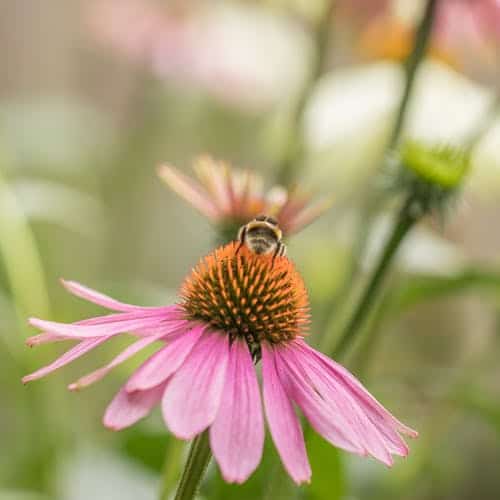
Echinacea is an herb that has purple flowers. It’s known for its ability to boost the immune system and treat colds, flu symptoms or allergies. The flower petals are used in teas or capsules as a dietary supplement.
Some of the uses of Echinacea include the following:
– Herbal supplement: Take a capsule of dried echinacea flowers twice daily to help with colds, flu symptoms or allergies.
Echinacea can be found in most pharmacies and health stores. It is also available online from various retailers such as Amazon.
In addition to its medicinal uses, the flower petals are often used in teas or capsules as an herbal supplement for their ability to boost the immune system and treat colds, flu symptoms or allergies. The leaves can also be eaten raw or cooked like spinach while they’re young and tender; older leaves become too tough when cooked so they should only be used fresh (not dried). You may find them at farmers markets during springtime! Some people even make wine from the Echinacea flowers.
Echinacea can be grown from seed or purchased as a potted plant in your local garden center.
Echinacea favored growing conditions are:
– Full sun to part shade, with well-drained soil that does not dry out too quickly (such as sandy loam). If growing them indoors then place the plant in a south-facing window for maximum sunlight exposure.
Echinacea seeds can be purchased from seed catalogs or online retailers such as Amazon.com. If you want to try to grow them from seed, they can be started indoors in late winter before the last frost or outdoors after all danger of frost has passed.
Echinacea doesn’t require much maintenance. It can be grown in containers or directly into the ground and has few pests or diseases that affect its growth rate, although it does attract butterflies!
Echinacea blooms from mid-summer to late fall, peaking in the latter half of the season.
3.Rosemary
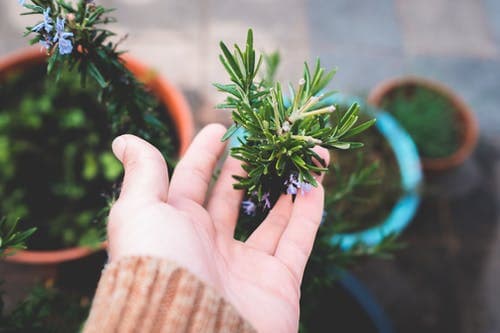
The perennial Rosemary is another purple-flowering plant. It has needle-like leaves that are evergreen and have a pleasant odor. Other than the hue of purple, rosemary blooms come in white, pink, and blue hues as well.
The plant, which grows to a height of 4 feet and is native to Asia and Europe, has leaves that grow up to 5mm broad and length of up to 4cm. It’s a robust perennial that can withstand harsh weather with no water for extended periods of time.
Some of the benefits of rosemary include:
- – Herbal supplement: Take a capsule of dried rosemary leaves twice daily to improve memory.
- – Seasoning food: Add fresh or dried rosemary leaves to your favorite chicken, soup or stew recipes for flavor.
- – Cosmetic additive: Add rosemary oil to your shampoo, soap or other beauty products.
- – Perfume ingredient: Use rosemary oil in perfumes or colognes for a woodsy scent.
Rosemary’s ideal growing conditions:
– Full sun to part shade, with well-drained soil that does not dry out too quickly (such as sandy loam). If growing them indoors then place the plant in a south-facing window for maximum sunlight exposure.
Rosemary Blooms from late winter to early summer, depending on the climate.
In the summer, rosemary leaves become bright green, and eponymous rosemary leaves grow from them. Rosemary’s flowers come in all colors of the rainbow throughout the season, with their petals appearing in late summer through autumn
4. Violet
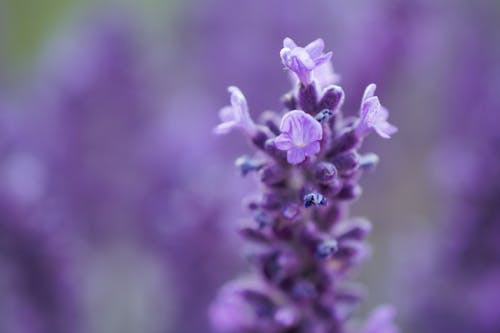
Violet is a plant that has purple flowers. Its leaves are used for seasoning food, as an additive in cosmetics or perfumes and even to improve memory.
Some of the uses of violet include:
Herbal supplement: Take a capsule of dried violet leaves twice daily to improve memory.
Seasoning food: Add fresh or dried violet leaves to your favorite chicken, soup or stew recipes for flavor. Cosmetics and perfume ingredients: Use violet’s petals in soaps and lotions, as well as colognes and perfumes if desired!
Violet can be found at most pharmacies; it may also grow wild near water sources such as ponds where there’s plenty of sunlight (but not too much).
Violet Growing Conditions
- – Partial Shade: Violets do well in shaded areas as long as there is some sunlight.
- – Moisture Retention: Keep the soil moist, but not wet, for best results.
- – Well Drained Soil: Violets don’t like having their feet wet and will rot quickly if kept in moist
Violets bloom from late winter to early summer, depending on the climate.
In the summer, violet leaves become bright green, and eponymous violet flowers grow from them. Violet’s petals appear in late summer through autumn
Violet flowers can be dried by cutting off the stem and hanging upside down in a cool, dark place until brittle.
5. Camelia
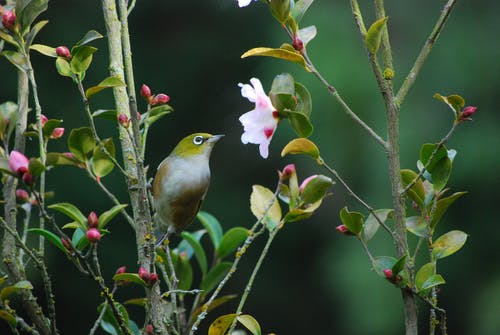
Camelia is an herb that has purple flowers. Its leaves are used for cooking, as well as being made into tea or a beverage known as camomile tea
Camelia uses include:
- – Herbal supplement: Take a capsule of dried camelia leaves twice daily to improve memory.
- – Cooking ingredient: Add fresh or dried camelia leaves to your favorite chicken, soup or stew recipes for flavor.
- – Tea additive: Steep camelia leaves in hot water to make tea. This tea is known as camomile and
Camelia ideal growing conditions are:
- – Partial Shade: Camelia does well in shaded areas as long as there is some sunlight.
- – Well Drained Soil: Camelia doesn’t like having their feet wet and will rot quickly if kept in moist soil.
Camelia Bloom from late winter to early summer, depending on the climate.
In the summer, camelia leaves become bright green, and eponymous camelia flowers grow from them. Camelia’s petals appear in late summer through autumn
6. Snapdragon
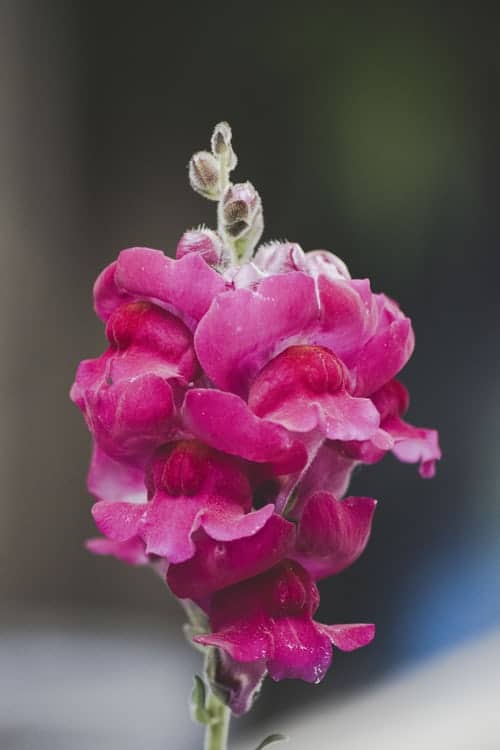
Snapdragon is a flower that has purple, pink and white petals. It’s often used in gardens or as a decoration. Snapdragon is known for its healing properties and can be used to treat skin problems, respiratory issues and other conditions.
Snapdragons uses include:
- – Herbal supplement: Take a capsule of dried snapdragon leaves twice daily to improve memory.
- – Tea additive: Steep snapdragon leaves in hot water to make tea, which is known for its healing properties.
Snapdragons ideal growing conditions are:
- – Partial Shade: Snapdragon does well in shaded areas as long as there is some sunlight.
- – Well Drained Soil: Snapdragon doesn’t like having their feet wet and will rot quickly if kept in moist soil.
Snapdragons bloom from late winter to early summer,
depending on the climate. In the summertime, Snapdragons flowers come out all colors throughout the season (including purple!). Their petals appear during late spring through autumn; however, it takes longer than other plants before they bloom again due to how much time has passed since the last blooming period was over! Snapdragons need at least two years of resting between
7. Belladonna
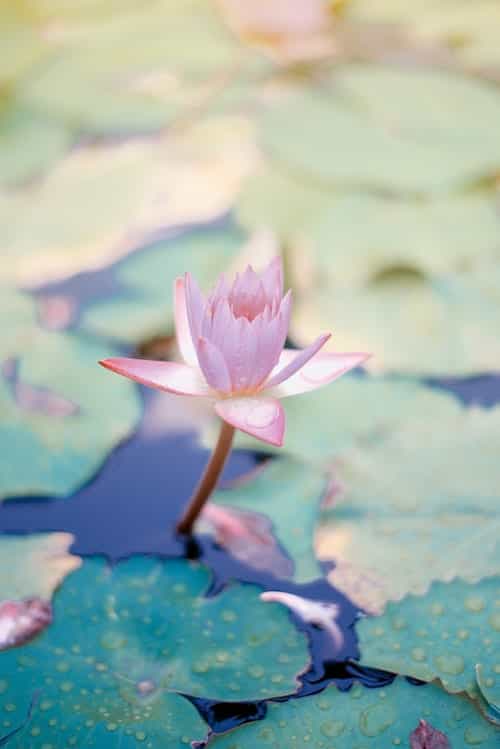
Belladonna is a herb that has purple flowers. It’s most commonly known for its poisonous properties, although it does have some medicinal benefits. Belladonna can be used to treat many issues such as diarrhea, asthma, and even cancer Herbs with purple flowers are a beautiful addition to any garden
Belladonna uses include:
- – Herbal supplement: Take a capsule of dried belladonna leaves twice daily to improve memory.
Belladonna ideal growing conditions are:
- – Partial Shade: Belladonna does well in shaded areas as long as there is some sunlight.
- – Well Drained Soil: Belladonna doesn’t like having their feet
belladonna likes full sun and moist soil. It’s important to be careful when handling this plant because of its toxicity.
8. Peony

The beauty of peony stems is due to their intricate structure and formation, which include six petioles per leaf. Each individual plant has a distinct set of characteristics, owing to its origin in regions including Asia, Europe, and Western North America where it grows as either a deciduous perennial herb or woody shrub.
Single, double, semi-double, bomb, Japanese, and anemone are the six forms of peony herb flowers. Color variations include red, purple, yellow, white, pink, and coral. Even when they come from the same species, you can find peony herbs that are quite different.
Peony uses included the following:
- Peony’s anti-inflammatory effects are well-known.
- Helps to minimize the formation of hepatitis enzymes.
- Pain relief during menstruation.
- Platelets are a blood component that can cause problems if they combine and grow together. Peony reduces this
- It lowers the frequency of miscarriages in women.
9. Bergamot
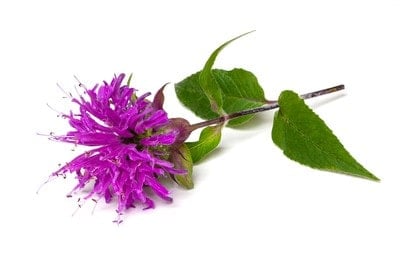
Bergamot is a type of flower that has purple and white petals. It’s often used in teas or as an essential oil. Bergamot is known for its many benefits such as reducing anxiety, improving moods, fighting infection and helping with digestion.
Bergamot uses include:
- – Herbal supplement: Take a capsule of dried bergamot leaves twice daily to improve memory.
- – Tea additive: Steep bergamot leaves in hot water to make tea, which is known for its healing properties.
Bergamot ideal growing conditions are:
- -Bergamots like full sun but do best when planted in partial shade.
- They need well-drained soil.
10. Wild Indigo
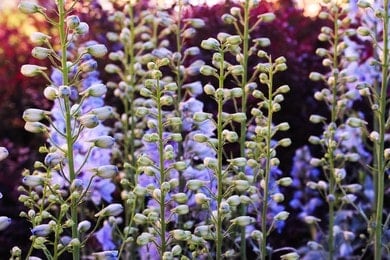
The false indigo, also known as wild indigo, is a shrub that grows in southern North America’s grasslands and eastern North America’s woodlands. The plant may reach up to 16 inches tall with a hardwood base and pea-shaped flowers varying from purple to blue in hue.
Wild Indigo uses include the following:
- This is a chemical that may be used in various ways, either alone or as a dye.
- It is also an antioxidant, which helps boost the body’s natural resistance to disease.
- Helps with injury healing by assisting in the mending of damaged tissue.
- Keeps good oral hygiene in place.
- Treat mouth, nose, and ear infections with it.
Wild Indigo growing conditions:
- Bright light – thrives in direct sunlight with some shade.
- Soil – well-drained, slightly acidic soil is ideal.
It’s difficult to replicate these growing conditions indoors, but it is still doable.
11. Thyme
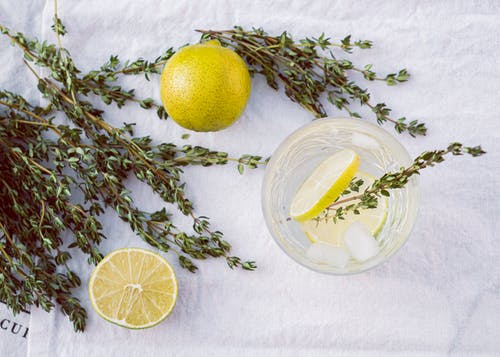
Thyme is a Mediterranean plant with vivid purple blooms. It reaches a height of roughly 40 centimeters. It’s a bushy evergreen subshrub with woody roots and tiny grayish-green leaves that grows to a height of approximately 40cm. The flowers are occasionally pink (aside from the purple hue).
Thyme uses include:
- can be used in cooking for many different dishes.
- It has some medicinal benefits such as treating respiratory issues, sore throats and coughs.
- Helps to lower blood pressure.
- Relieves many skin issues.
- It can help to prevent cancer.
- The plant contains chemicals that repel mosquitos.
- The flowers are used in floral arrangements for gift items.
- To give a plesent aroma.
Thyme ideal growing conditions are:
– Partial Shade: Thyme does well in shaded areas as long as there is some sunlight.
– Well Drained Soil: Thyme doesn’t like having their feet wet
12. Christmas Basil
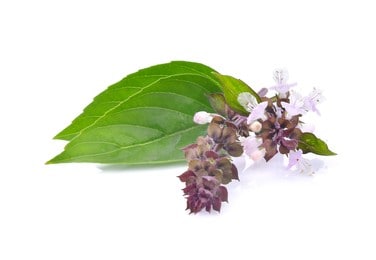
Christmas basil is just one of the many types of herbs in the basil family. It has purple flowers that grow to a height of about 16 inches and is a Thai native. It has large glossy leaves with a fruity smell and blooms in the summer.
Christmas Basil uses include the following:
- Seasoning.
- Cooking.
Christmas Basil can be found at most pharmacies; it may also grow wild near water sources such as ponds where there’s plenty of sunlight (but not too much).
13. Cinnamon Basil
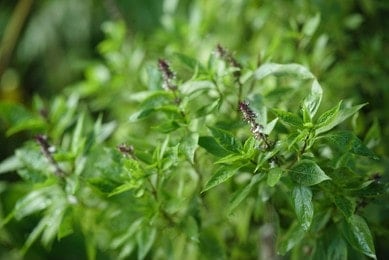
Second from the basil family is the cinnamon variant, which is aptly named due to its aroma and flavor resembling cinnamon Herbs with purple flowers are a beautiful addition to any garden. The flowers range in color from lavender to deep purple, making a visual statement in the garden.
Cinnamon Basil grows best:
– In full sun
– In slightly acidic soil and well-drained, moist soil.rom early spring until midsummer
14. Catnip
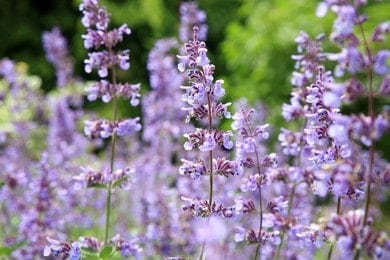
This member of the mint family is a favorite of cats- both for its aroma and taste. Herbs with purple flowers. The flowers range in color from lavender to deep purple, making a visual statement in the garden.
The catnip herb, also called catwort, catswort, catmint, and Nepeta cataria, is a minty plant native to China, the Middle East, Central Asia, and Eastern and Southern Europe. It may reach a height of 100 cm and is perennial in nature. Its square stems with dark green leaves and oval
Catnip grows best:
– In full sun
– In moist soil.
– From early spring until fall
Catnip main uses are:
– Herbal tea and Herbal remedies for colds and flu.
15. Anise Hyssop
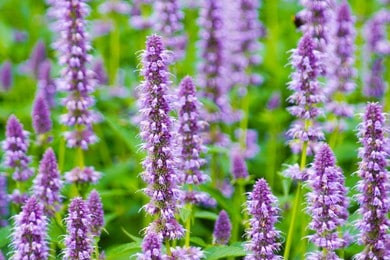
This plant, also known as blue giant hyssop, fragrant giant hyssop, or the lavender giant hyssop, is a member of the mint family that has purple flowers in showy verticillasters or false whorls. It’s native to North America and grows to a height of 120 cm and a width of 30cm
Anise Hyssop uses include the following
- Herbal supplement: Take a capsule of dried anise hyssop leaves twice daily to improve memory.
- Seasoning food: Add fresh or dried anise hyssop leaves to your favorite chicken, soup or stew recipes for flavor.
- Cosmetic and perfume ingredients: Use anise hyssop’s petals in soaps and lotions, as well as colognes and perfumes if desired!
Anise Hyssop grows best:
– In full sun
– In moist soil and well-drained soil
– From early spring until late fall
16. Spearmint
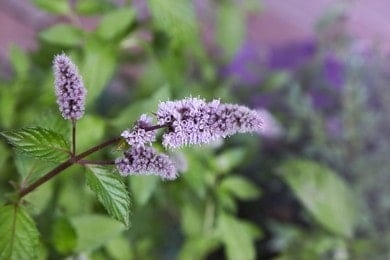
Spearmint is a kind of mint that may grow to be up to one meter tall. It’s native to Turkey and the Balkan Peninsula, although it has been naturalized in other parts of the world, including North America, Africa, Europe, and Asia. Both species are able to survive in these conditions. The herb is perennial in nature
spearmint main uses are:
- – Herbal tea
- – Herbal remedies for colds and flu.
Spearmint grows best:
– In full sun and well-drained soil
– Spearmint blooms from late spring until early fall.
17. Purple Basil
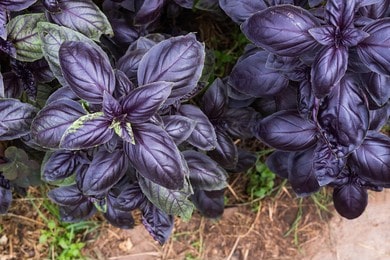
Purple basil has dark green leaves with an intense aroma Herbs with purple flowers are a beautiful addition to any garden. Often used as an ornamental plant, it can also be grown indoors because of its attractive appearance!
Christmas Basil uses are as follows:
- Seasoning foods.
-Eaten directly.
The growing conditions for Christmas Basil:
Sunlight – lots of sunlight needed.
The soil must be moist but well-drained.
Each plant needs to be at least 10 inches apart
You can grow the herb indoors but you need lots of direct sunlight
18. Oregano
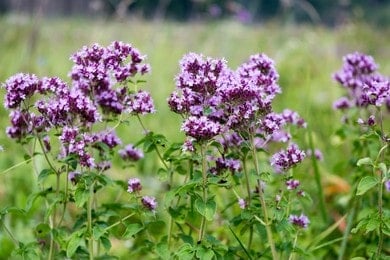
Oregano, as a purple-flowered herb in the mint family, is both lovely and helpful to the garden and house. It’s a Mediterranean plant that may also be found in temperate west and southwestern Europe. The plant has spade-shaped leaves that are olive green in hue and grows to a height of 80 cm.
Oregano uses include the following:
- It’s used as a fragrance because it contains thymol, pinene, limonene, carvacrol, ocimene, and caryophyllene.
- It is added to food as a source of calories (calories), calcium, magnesium, fiber, iron, manganese, potassium, and vitamins K and E.
- It has anti-inflammatory and antibacterial effects that may be utilized in many situations and on several illnesses.
- Bone health is improved. Free radicals and their consequences are protected against by this ingredient. Cancer progression is slowed down and prevented.
- Oral hygiene is enhanced by this substance.
- Flavorings such as pasta and pizza; meats; breads are all improved with it
Oregano grows in the following conditions:
Sunlight – direct and full sunshine.
Soil – well-drained.
Oregano may also be cultivated indoors under the right circumstances.
19. Chives
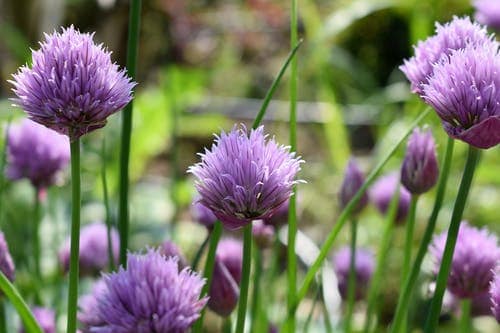
Chives are purple-flowered herbs that are native to Europe, Asia, and North America. Their flowers take the form of bulbs with the plant growing to around 50cm tall. Their stems are tubular and hollow with a velvety texture. They’re generally found in groups near their roots, although they may also be seen in clusters from
Chives uses include:
- They have an onion-like taste and thus used to garnish soups and added to salads.
- Pest control as they have insect-repelling properties.
- Mood enhancement.
- Improving bone health.
- Cancer prevention.
- Decorative garnish for dishes
Chives best-growing conditions:
- Plants require both full and partial sunlight.
- Soil must be well-drained and fertile.
- Fertilizer is often required.
They may be cultivated in your yard, as well as inside.
20. Sage
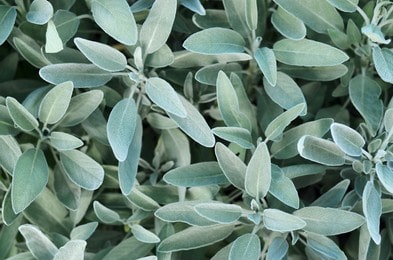
Sage, also known as culinary sage, garden sage, or common sage, is a plant that originated in the Mediterranean region but may now be found all across the world. It has blue to purple flowers with evergreen foliage and a gray hue. The stems are woody.
Sage uses include:
- Has a peppery flavor hence found in cuisines in Europe, America and the Middle East. These include teas, meats and cheese.
- Alleviates symptoms of Alzheimer’s disease and other forms of dementia.
- It’s also good for your dental health.
- This herb is an antioxidant that helps to reduce cholesterol and glucose levels in the blood.
- Provides relief from the symptoms of menopause.
- Supports memory and other brain functions.
The rosmarinic acid, vitamin K, manganese, iron, calcium, and vitamin B6 in this plant’s root are believed to provide health benefits.
Sage Growing Conditions
You can grow sage in almost any soil type, including poor, rocky, sandy soils. However, here are some tips on how to care for your sage plants in the garden.
1. Prune back spent flowers and leaves. When your plant reaches 6 inches tall, cut back half the stems to encourage bushier growth. Sage will bloom year-round, so do not worry about dead flower heads.
2. Water evenly throughout the growing season. Give your plants plenty of water at least once per week during the dry season. Do not water deeply so you don’t disturb the roots. Leave the plants moist enough to keep them healthy, but not soggy.
3. Keep weed seeds from entering your garden by clearing weeds from around the base of your plants whenever they appear. As you mow grass clippings and debris under your plants, this material helps protect them from disease and pests.
4. Prevent pests from eating your sage by placing a row cover over your plants when temperatures reach 80 degrees Fahrenheit. Row covers also help prevent weeds from sprouting around your sage.
